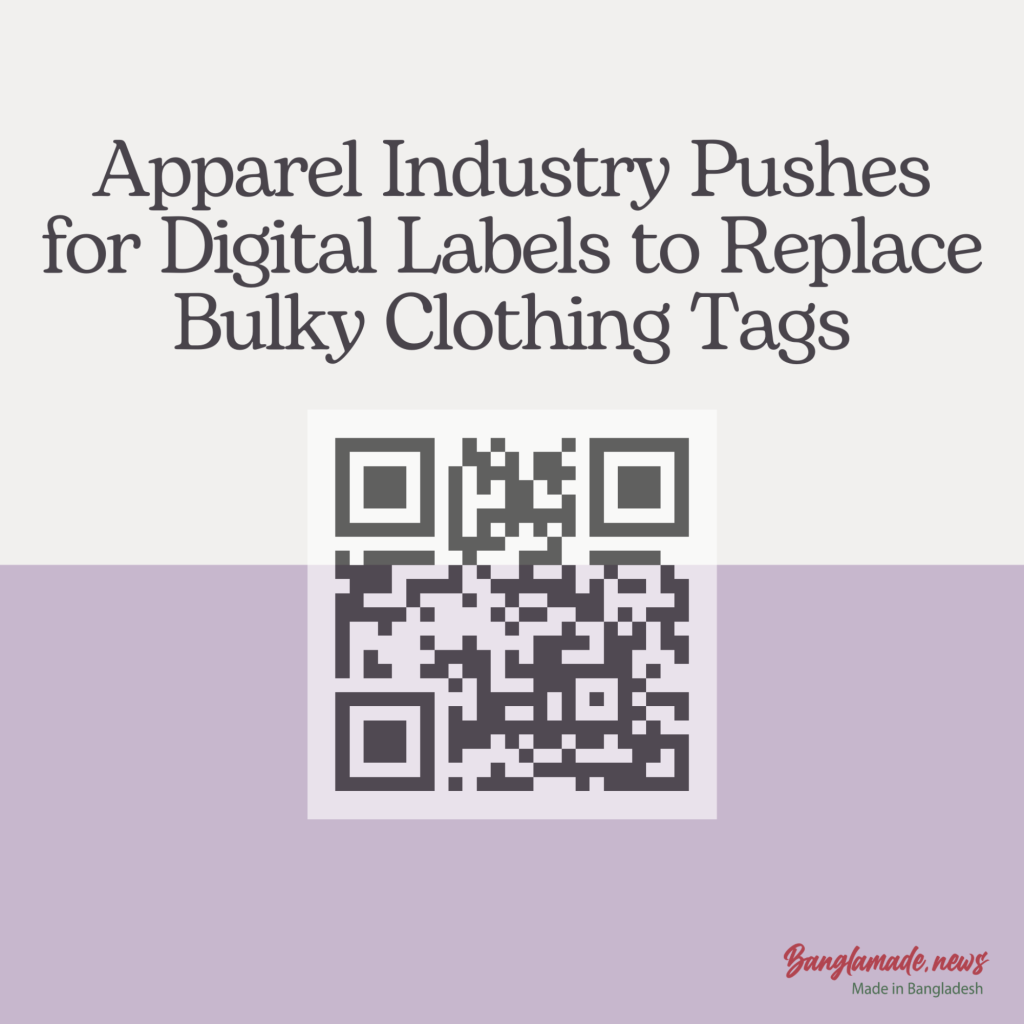
If the apparel industry has its way, the days of bulky clothing tags with washing instructions and other information may soon be replaced by small labels with QR codes. Brands like Ralph Lauren have already started utilizing digital product labels, which offer consumers the ability to scan them for a wealth of details about the garment they’re wearing or considering purchasing.
The move comes as the broader retail industry transitions to “2D” barcodes, unlocking a wealth of online extras for everyday products. Garment manufacturers are lobbying Congress and the Federal Trade Commission (FTC) for permission to replace physical clothing tags with digital labels, likely in the form of QR codes.
With a simple scan, consumers could access legally required information, as well as additional details such as recycling instructions, supply chain transparency, product recalls, and the manufacturer’s sustainability practices. The landing page for the digital label could be updated in real-time to reflect changes or provide new information.
The shift to digital clothing labels would allow manufacturers to make the tags smaller, addressing concerns of discomfort and annoyance caused by bulky tags. It would also combat issues such as “label mangling,” where consumers remove tags, and “label creep,” the growing list of complicated care labels mandated by governments worldwide.
Jason Berns, Head of Product and Manufacturing Innovation at Ralph Lauren, highlights the potential of smaller, less noticeable access points for information, reducing the need for consumers to remove tags. The current FTC requirements for garment labels include fiber content, country of origin, and manufacturer information, which have been in place since the 1960s.
However, the American Apparel & Footwear Association, led by CEO Stephen Lamar, advocates for “label modernization” by allowing QR codes as a substitute for existing clothing tags. Lamar points out that the current labeling system is outdated and has become increasingly burdensome with excessive information squeezed onto small labels.
While concerns have been raised regarding internet accessibility for all consumers, Lamar argues that digital labels could enhance accessibility, particularly for those with visual impairments struggling to read the tiny symbols on current tags. As the fashion industry moves towards circular practices such as thrifting, recycling, and composting garments, digital labels offer a more robust way for future users to access essential information about items.
The apparel industry’s push for digital labels reflects a desire for innovation and greater transparency, providing consumers with convenient access to comprehensive information about the garments they wear.
